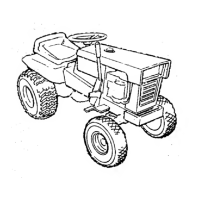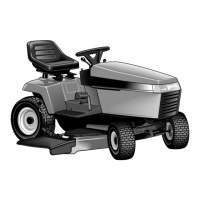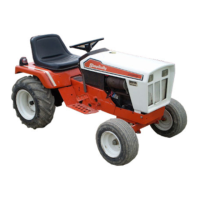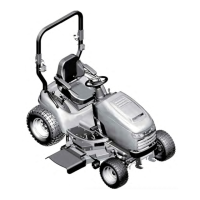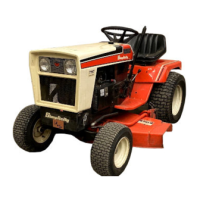Figure 2. Engaging the Parking Brake
Parking Brake Function
Applying the Parking Brake - To lock the parking
brake, release the ground speed pedals (A, Figure 2),
fully depress the brake pedal (B), pull UP on the parking
brake knob (C), and then release brake pedal.
Releasing the Parking Brake - To release the parking
brake, fully depress the brake pedal (B, Figure 2) and
push the parking brake knob (C) DOWN.
Hourmeter
The hourmeter (A, Figure 3) measures the number of
hours the key has been in the RUN position. The
hourmeter will flash an initial oil change indicator at 5
hours, and a lubrication reminder every 50 hours. These
reminders display for approximately two hours and will
automatically reset themselves.
NOTE: The hourmeter will register the passage of time
when the key is in the RUN position, even if the engine is
not running. The hourmeter has a self contained power
source so the total hours are always visible.
A
Figure 3. Hourmeter
Automatic Controlled Traction
What is Automatic Controlled Traction?
Automatic Controlled Traction (ACT) is an exclusive
feature of our transmissions that provides improved
traction. ACT applies a preset amount of torque to both
rear wheels even if one starts slipping (a transmission
without ACT will lose traction completely if one rear
wheel starts slipping). This preset torque is just enough
to provide additional traction, and still allow the wheels to
turn at different speeds in a tight turn without damaging
the lawn.
A
B
C
12-Volt Power Outlet
The 12-volt accessory plug is located in the left side pod.
It can be used to power small electronic devices. The
accessory must be rated at 9 amps or less.
NOTE: Operating a 12-volt accessory, especially with the
engine at idle, may cause battery discharge. When not
using the accessory plug it must be covered with the
rubber plug to prevent moisture from causing a short
circuit. Entrance of water into plug can cause a short
circuit.
What to Expect from Your ACT Tractor
For the most part, while using your tractor you will not
notice ACT working, and you will simply become
accustomed to increased traction an ACT transmission
provides.
Under certain circumstances the ACT system limit can
be exceeded, and one of the rear wheels may slip (for
instance if trying to turn up a hill while accelerating).
This is normal. If you start to lose traction, do not speed
up. Instead, slow to a stop, straighten the steering wheel,
and slowly accelerate. Stopping the tractor allows the
transmission to regain more traction.
FEATURES AND CONTROLS
12
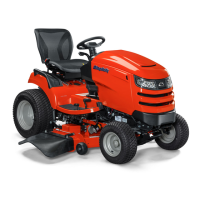
